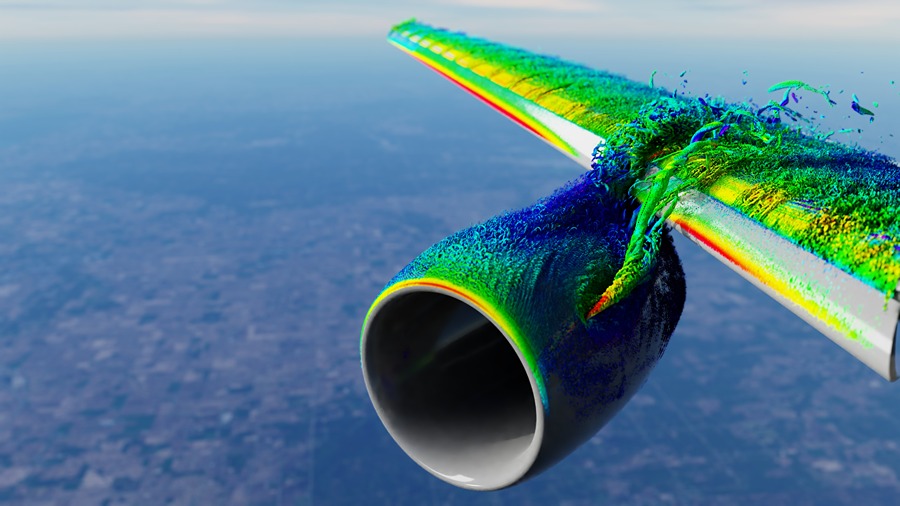
SAN JOSE, CA (GTC), Mar 24, 2025 – NVIDIA announced that CAE software vendors, including Ansys, Altair, Cadence, Siemens, and Synopsys, are accelerating their simulation tools by up to 50x with the NVIDIA Blackwell platform.
With such accelerated software, along with NVIDIA CUDA-X libraries and blueprints to further optimize performance, industries such as automotive, aerospace, energy, manufacturing, and life sciences can reduce product development time, cut costs, and increase design accuracy while maintaining energy efficiency.
“CUDA-accelerated physical simulation on NVIDIA Blackwell has enhanced real-time digital twins and is reimagining the entire engineering process,” said Jensen Huang, founder and CEO of NVIDIA. “The day is coming when virtually all products will be created and brought to life as a digital twin long before it is realized physically.”
Ecosystem Support for NVIDIA Blackwell
Software providers can help their customers develop digital twins with real-time interactivity and accelerate them with NVIDIA Blackwell technologies.
The growing ecosystem integrating Blackwell into its software includes Altair, Ansys, BeyondMath, Cadence, COMSOL, ENGYS, Flexcompute, Hexagon, Luminary Cloud, M-Star, NAVASTO, an Autodesk company, Neural Concept, nTop, Rescale, Siemens, Simscale, Synopsys and Volcano Platforms.
Cadence is utilizing NVIDIA Grace Blackwell-powered systems to address a problem in computational fluid dynamics: simulating an aircraft during takeoff and landing. By employing the Cadence Fidelity CFD solver, they completed multibillion-cell simulations on a single NVIDIA GB200 NVL72 server in less than 24 hours. This task would have previously required a large CPU cluster with hundreds of thousands of cores and taken several days to finish.
This modernization will support the aerospace industry in designing safer and more efficient aircraft while minimizing the need for expensive wind tunnel testing. This approach help reduce development time and bring new designs to market.
Anirudh Devgan, president and CEO of Cadence, said, “NVIDIA Blackwell’s acceleration of the Cadence.AI portfolio delivers increased productivity and quality of results for intelligent system design – reducing engineering tasks that took hours to minutes and unlocking simulations not possible before. Our collaboration with NVIDIA drives innovation across semiconductors, data centers, physical AI and sciences.”
Sassine Ghazi, president and CEO of Synopsys, said, “At GTC, we’re unveiling the latest performance results observed across our leading portfolio when optimizing Synopsys solutions for NVIDIA Blackwell to accelerate computationally intensive chip design workflows. Synopsys technology is mission-critical to the productivity and capabilities of engineering teams, from silicon to systems. By harnessing the power of NVIDIA accelerated computing, we can help customers unlock new levels of performance and deliver their innovations even faster.”
Ajei Gopal, president and CEO of Ansys, said, “The close collaboration between Ansys and NVIDIA is accelerating innovation at an unprecedented pace. By harnessing the computational performance of NVIDIA Blackwell GPUs, we at Ansys are empowering engineers at Volvo Cars to tackle the most complex computational fluid dynamics challenges with exceptional speed and accuracy – enabling more optimization studies and delivering more performant vehicles.”
James Scapa, founder and CEO of Altair, said, “The NVIDIA Blackwell platform’s computing power, combined with Altair’s cutting-edge simulation tools, gives users transformative capabilities. This combination makes GPU-based simulations up to 1.6x faster compared with the previous generation, helping engineers rapidly solve design challenges and giving industries the power to create safer, more sustainable products through real-time digital twins and physics-informed AI.”
Roland Busch, president and CEO of Siemens, said, “The combination of NVIDIA’s groundbreaking Blackwell architecture with Siemens’ physics-based digital twins will enable engineers to drastically reduce development times and costs through using photo-realistic, interactive digital twins. This collaboration will allow us to help customers like BMW innovate faster, optimize processes and achieve remarkable levels of efficiency in design and manufacturing.”
Rescale CAE Hub With NVIDIA Blackwell
Rescale’s launched CAE Hub enables customers to streamline their access to NVIDIA technologies and CUDA-accelerated software developed by leading independent software vendors. Rescale CAE Hub provides flexible, high-performance computing and AI technologies in the cloud powered by NVIDIA GPUs and NVIDIA DGX Cloud.
Boom Supersonic will use the NVIDIA Omniverse Blueprint for real-time digital twins and Blackwell-accelerated CFD solvers on Rescale CAE Hub to design and optimize its new supersonic passenger jet.
The company’s product development cycle, which is simulation-driven, will use the Rescale platform accelerated by Blackwell GPUs to test different flight conditions and refine requirements in a continuous loop with simulation.
The adoption of the Rescale CAE Hub powered by Blackwell GPUs expands Boom Supersonic’s collaboration with NVIDIA. Through the NVIDIA PhysicsNeMo framework and the Rescale AI Physics platform, Boom Supersonic can unlock 4x more design explorations for its supersonic airliner, speeding iteration to improve performance and time to market.
NVIDIA Omniverse Blueprint Now Broadly Accessible for Enterprises
The NVIDIA Omniverse Blueprint for real-time digital twins, is part of the Rescale CAE Hub. The blueprint brings together NVIDIA CUDA-X libraries, NVIDIA PhysicsNeMo AI and the NVIDIA Omniverse platform – and is also adding NVIDIA NIM microservice for external aerodynamics.
Source: NVIDIA
About NVIDIA
![]()
NVIDIA Corp. is an American tech company headquartered in Santa Clara, CA. Renowned for designing and manufacturing graphics processing units (GPUs), NVIDIA’s innovations have significantly impacted various sectors. The company’s products and services cater to industries such as gaming, where its GPUs enhance visual experiences; artificial intelligence (AI), providing high-performance computing solutions; automotive, contributing to autonomous vehicle technologies; and robotics, offering advanced AI perception and simulation tools. Over its more than three decades in business, NVIDIA has experienced substantial growth. In the fiscal quarter ending January 2025, the company reported record revenue of $39.3 billion and a net income of $22.1 billion. NVIDIA’s headquarters, designed to facilitate a flat organizational structure, emphasizes information flow and harmony between leadership and employees.
